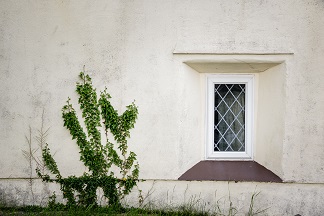
700BC c
Caerau hill fort of Rhiwsaeson was occupied
700AD c - Christianity spread to Llantrisant
1000c - Lord Gwrgan ap Ithel possibly built the original castle in Llantrisant which was part of the commote of Meisgyn and Glynrhondda in the kingdom of Morgannwg (Glamorgan)
1075c -The castle was rebuilt and repaired by Einon ab Collwyn after the invasion of Robert Fitzhamon
1091 – The last Glamorgan Welsh Lord Iestyn ap Gwrgan died and the borough may have paid homage to Norman Lord Robert Fitzhamon rather than being conquered
1096 – The original Romanesque-style church was built possibly under the orders of Fitzhamon as a fine romanesque church was also being built at Llandaff by Bishop Urban from 1107-1134
1107 – The death of Robert Fitzhamon, Lord of Glamorgan
1211 – Welsh leaders Hywel ap Maredudd and Morgan ap Cadwallon remain in charge of Meisgyn and Glynrhondda
1229 - Gilbert de Clare captured Morgan ap Cadwallon and left Hywel ap Maredudd of Meisgyn leader of the Welsh in Glamorgan. He took Glynrhondda, and attached the areas of St Nicholas, St Hilary and Kenfig by 1229
1243 – Richard de Clare began to consolidate his rule in Glamorgan
1244-45 – Richard de Clare overthrew Hywel ap Maredudd
1246 – Llantrisant castle was fortified by Richard de Clare. The first reference to the town of Llantrisant was made
1252 – Margaret de Clare was born in Llantrisant Castle
1259 - The castle was damaged by the Welsh attacks of Madog ap Llewelyn
1262 - Gilbert “The Red” became Lord of Glamorgan but was regarded as becoming too powerful for Edward I’s peace of mind, and his power was eroded. Glamorgan was eventually returned to Gilbert for 10,000 marks. An emerging community was beginning under the walls of Llantrisant castle
1294 - Between October 1294 and June 1295 the castle and many burgage plots were destroyed by Morgan ap Maredud in the revolt of Madog ap Llywelyn
1297 – Walter de Hacklut was ordered to complete the gate of the castle following the attacks. Gilbert de Clare’s war with Morgan ap Maredudd continued and the castle was sacked
1307 – There were 145 burgage plots in Llantrisant with 5 still vacant after the war
1314 – 187 burgage plots existed in Llantrisant with 29 vacant. Gilbert de Clare was killed at Bannockburn, Scotland. Bartholomew de Badelesmere was appointed by Edward II to be custodian of the castles. The de Clare wars took place in Glamorgan and in Llantrisant 47 burgages destroyed, the fair was suspended and the castle required repairs
1316 – The castle was destroyed during the rebellion of Llewelyn Bren along with 90 burgage plots and the garrison were killed. Only 9 burgage plots remained
1317 - Hugh le Despenser married the de Clare daughter, Eleanor, and became the new Lord of Glamorgan, and thus introduced a whole new dynasty
1321 – Llantrisant castle was wrecked during the pursuit of the English barons of Despenser the Younger
1326 – Edward II was imprisoned overnight in Llantrisant Castle
1346 - The Llantrisant Charter was presented on May 4 by Lord Hugh Despenser III. On August 26 the Battle of Crecy took place in northern France. The Guildhall would probably have been in place if not sooner
1349 – The borough had 232 burgage plots but the arrival of the Black Death had a devastating effect. The parish church became part of the Abbey of Tewkesbury











